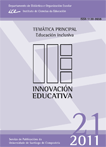La formación en interpretación remota: una experiencia docente interuniversitaria
Contenido principal del artículo
Resumen
La interpretación remota, es decir, la mediación lingüística oral que se realiza a través de algún medio tecnológico (como la interpretación telefónica o la interpretación por videoconferencia), está cobrando gran impulso en todo el mundo debido a sus incuestionables ventajas en cuanto a coste y disponibilidad tanto geográfica como temporal de los intérpretes. Sin embargo, los centros universitarios de formación de intérpretes no parecen estar ofreciendo programas formativos en esta nueva modalidad de trabajo. Para cubrir este vacío, en los cursos académicos 2016-17, 2017-18 y 2018-19 se llevó a cabo una experiencia docente interuniversitaria en forma de taller de interpretación remota entre la Universidad Pablo de Olavide de Sevilla y la Universidad de Alcalá, cuyo diseño, implementación, metodología y evaluación se describen en este artículo.
Palabras clave:
Detalles del artículo
Referencias
Bot, H. (2005). Dialogue interpreting as a specific case of reported speech. Interpreting, 7(2), 237261. DOi: https://doi.org/10.1075/intp.7.2.06bot
Braun, S. (2006). Multimedia communication technologies and their impact on interpreting. en H. gerzymisch-Arbogast (ed.), Proceedings of the Marie Curie Euroconferences MuTra: Audiovisual translation scenarios Copenhagen, s. p. Disponible en: http://epubs.surrey. ac.uk/804844/ [consulta: 1-9-2019].
Cheng, Q. (2015). Examining the challenges for telephone interpreters in New Zealand. Tesis: Auckland University of Technology. Disponible en: https://core.ac.uk/download/pdf/56365377. pdf [consulta: 1-8-2019].
Collados Aís, Á., Fernández Sánchez, M. M. y De Manuel Jerez, J. (2001). La interpretación Bilateral: características, situaciones comunicativas y modalidades. en Á. Collados Aís y M. M. Fernández Sánchez (coords.), Manual de interpretación bilateral (pp. 61-77). Granada: Comares.
Collados Aís, Á. y Fernández Sánchez, M. M. (2001) (coords.). Manual de interpretación bilateral. Granada: Comares.
Crezee, I. (2013). Introduction to healthcare for interpreters and translators. Amsterdam: John Benjamins. DOi: https://doi.org/10.1075/z.181
Fantinuoli, C. y Prandi, B. (2018). Teaching information and communication technologies. A proposal for the interpreting classroom. Trans-kom, Journal of Translation and Technical Communication Research, 11(2), 162-182. Disponible en http://www.trans-kom.eu/bd11nr02/transkom_11_02_02_Fantinouli_Prandi_Teaching.20181220.pdf [consulta: 1-9-2019].
Fernández Pérez, M. M. (2015). Propuestas de ejercicios de simulación para la didáctica de la interpretación telefónica. MonTI, Monografías de Traducción e Interpretación, (2), 259-279. DOi: https://doi.org/10.6035/MonTi.2015.ne2.10
Fernández Pérez, M. M. (2017). interaction Management Skills in Telephone interpreting. Revista Canaria de Estudios Ingleses, (75), 103-117. Disponible en: https://riull.ull.es/xmlui/handle/915/6968 [consulta: 1-8-2019].
Foulquié Rubio, A. i. (2019). Interpretación en los servicios públicos y en la empresa. Murcia: Servicio de Publicaciones de la Universidad de Murcia.
García Luque, F. (2009). La interpretación telefónica en el ámbito sanitario: realidad social y reto pedagógico. REDIT – Revista Electrónica de Didáctica de la Traducción y la Interpretación, (3), 18-30. DOi: https://doi.org/10.24310/ReDiT.2009.v0i3.1920
González Rodríguez, M. J. y Spinolo, N. (2017). Telephonic dialogue interpreting. A short teaching course. en L. cirillo y N. Niemants (eds.), Teaching Dialogue Interpreting (pp. 241-257). Ámsterdam: John Benjamins. DOi: https://doi.org/10.1075/btl.138.12gon
Gracia-García, R. A. (2002). Telephone interpreting: A review of pros and cons. en S. Brennan (ed.), Proceedings of the 43rd Annual Conference (pp. 195-216). Alexandria: American Translators Association.
Hsieh, E. (2006). Understanding medical interpreters: Reconceptualizing bilingual health communication. Health Communication, 20(2), 177-186. DOi: https://doi.org/10.1207/ s15327027hc2002_9
Jiménez Higuera, S. (2018). Specific Training for Telephone Interpreters, by Interpret Solutions. en A. Ruiz Mezcua (ed.), Approaches to Telephone Interpretation. Research, Innovation, Teaching and Transference (pp. 51-59). Berna: Peter Lang.
Kelly, N. (2008). Telephone interpreting: A comprehensive guide to the profession. Victoria: Trafford.
Ko, L. (2006). The need for long-term empirical studies in remote interpreting research: A case study of telephone interpreting. Linguistica Antverpiensia, (5), 325-338. Disponible en https://lanstts.uantwerpen.be/index.php/LANS-TTS/article/view/167 [consulta: 1-8-2019].
Lázaro gutiérrez, R. (2019). Telephone interpreting and roadside assistance. Translation and Translanguaging in Multilingual Contexts, 5(3), 215-240. DOi: https://doi.org/10.1075/ ttmc.00033.laz
Lázaro gutiérrez, R. y Cabrera Méndez, G. (2019). context and pragmatic meaning in telephone interpreting. En P. garcés-conejos Blitvich, L. Fernández-Amaya y M. O. Hernández-López (eds.), Technology Mediated Service Encounters (pp. 45-68). Ámsterdam: John Benjamins.
Lee, J. (2007). Telephone interpreting seen from the interpreters’ perspective. Interpreting, 9(2), 231-252. DOi: https://doi.org/10.1075/intp.9.2.05lee
Mikkelson, H. (2003). Telephone interpreting: Boon or Bane? en L. Pérez gonzález (ed.), Speaking in tongues: Language across contexts and users (pp. 251-269). Valencia: Universitat de València.
Niemants, N. y Cirillo, L. (2017). Dialogue interpreting: Research, education and professional practice. en L. Cirillo y N. Niemants (eds.), Teaching Dialogue Interpreting (pp. 2-25). Ámsterdam: John Benjamins. DOi: https://doi.org/10.1075/btl.138
Ozolins, U. (2017). it’s not about the interpreter. Objectives in dialogue interpreting teaching. en L. Cirillo y N. Niemants (eds.), Teaching Dialogue Interpreting (pp. 45-62). Ámsterdam: John Benjamins. DOi: https://doi.org/10.1075/btl.138.02ozo
Pertusa Elorriaga, I. (2012). La interpretación en la distancia. Suplemento: la traducción y la interpretación en los servicios públicos. Revista Traditori, (3), 25-29.
Pöchhacker, F. (2007) (2ª ed.). Introducing Interpreting Studies. Londres: Routledge.
Rosenberg, B. A. (2004). A data driven analysis of telephone interpreting. en c. Wadensjö, B. e. Dimitrova y A-L. Nilsson (eds.), The Critical Link 4: Professionalisation of interpreting in the community (pp. 65-77). Ámsterdam: John Benjamins. DOi: https://doi.org/10.1075/ btl.70.09ros
Ruiz Mezcua, A. (2018). general Overview of Telephone interpretation (Ti): A State of the Art. en A. Ruiz Mezcua (ed.), Approaches to Telephone Interpretation. Research, Innovation, Teaching and Transference (pp. 7-17). Berna: Peter Lang. DOi: https://doi.org/10.3726/b13326
Skinner, R., Napier, J. y Braun, S. (2018). Interpreting via video link: Mapping the field. En J. Napier, R. Skinner y S. Braun (eds.), Here or There: Research on Interpreting via Video Link (pp. 11-35). Washington Dc: gallaudet.
Valero Garcés, C. (2008). Formas de mediación intercultural: Traducción e Interpretación en los Servicios Públicos. Conceptos, datos, situaciones y práctica. granada: comares.
Wadensjö, c. (1999). Telephone interpreting and the synchronization of talk in social interaction. The Translator, 5(2), 247-264. DOi: https://doi.org/10.1080/13556509.1999.10799043







